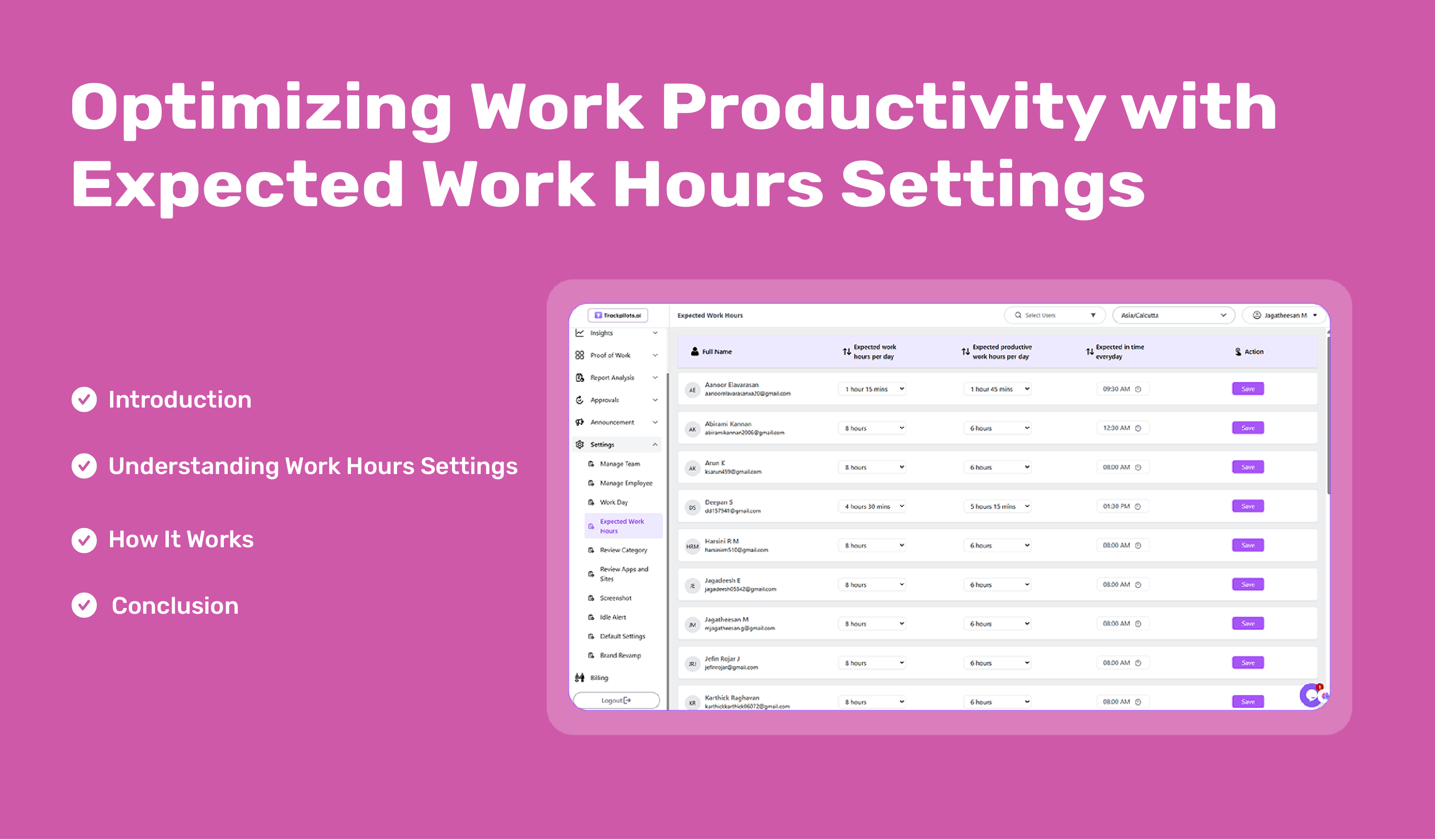SETTINGS
Optimizing Work Productivity with Expected Work Hours Settings
Efficient workforce management starts with tracking expected work hours, productivity, and daily check-ins to ensure optimal performance.

Introduction
Efficient workforce management plays a crucial role in any organization. The Expected Work Hours settings allow administrators to define key work parameters such as expected work hours per day, expected productive work hours per day, and expected in-time for employees. This feature ensures structured work schedules while helping analyze employee productivity.
Understanding Expected Work Hours Settings
In the Expected Work Hours section, the admin can configure the following:
Expected Work Hours Per Day – The total number of hours an employee is scheduled to work.
Expected Productive Work Hours Per Day – The number of hours an employee is expected to be actively engaged in productive tasks.
Expected In-Time Every Day – The preferred check-in time for employees.
Each employee's work schedule is personalized, ensuring alignment with business goals while maintaining flexibility for different work structures.
How It Works
The administrator selects the expected hours and in-time for each employee.
The system calculates and analyzes work hours versus actual productivity.
Data insights are presented on a dashboard, highlighting employee efficiency in percentage form.
Conclusion
By implementing the Expected Work Hours settings, organizations gain clear visibility into employee performance, ensuring workforce efficiency and productivity tracking. This structured approach helps businesses optimize work schedules while enhancing overall productivity.

